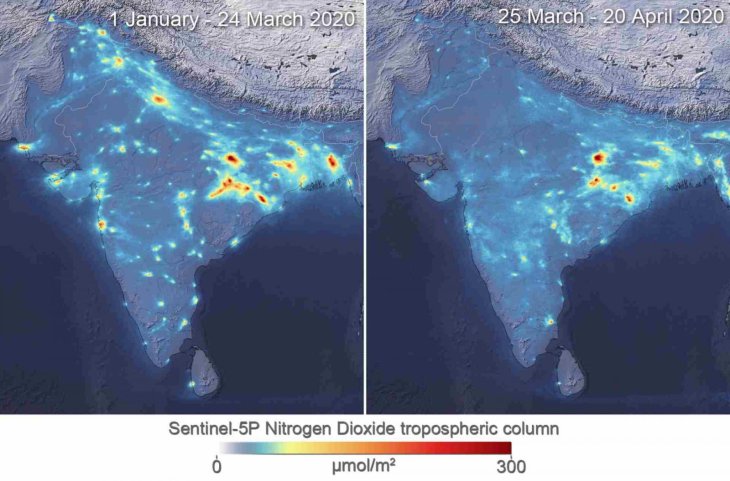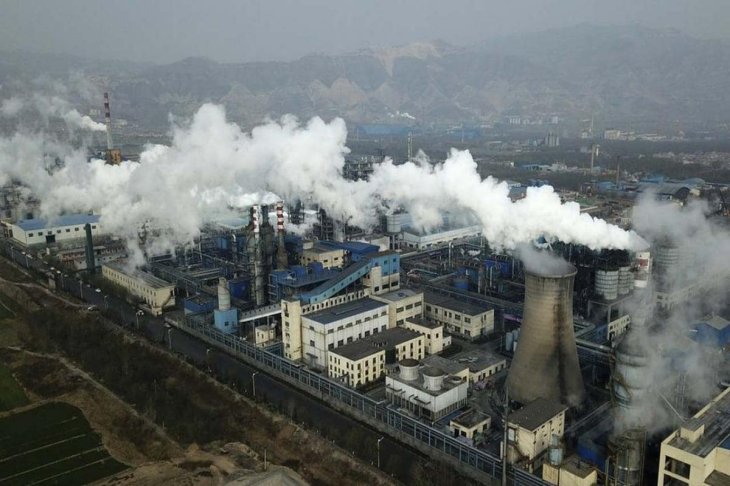India Lockdown Has Led To A 40-50% Decrease In The Air Pollution Levels
Harin - Apr 27, 2020

From March 24th to April 20th, India saw a considerable drop in terms of average nitrogen dioxide concentrations, leading to a decrease in pollution levels.
- Delhi Is The World’s Most Polluted Capital City For Three Years In A Row
- 54,000 People In Delhi Killed Last Year Because Of Air Pollution
- For The First Time In Five Years, Delhi Had The Cleanest Day
The COVID-19 outbreak and the nationwide lockdown has added changes to people’s lifestyle. People need to work from home, kids can’t go outside to play and everything has gotten out of hand.
However, amid this chaotic, there is still something that is positive. As the pandemic hits pause on all activities globally, Mother Earth is healing. The Copernicus Sentinel-5P satellite recently captured images showing a significant drop in pollution in various Indian cities.

From March 24th to April 20th, India saw a considerable drop in terms of average nitrogen dioxide concentrations.
Compared to the same time last year, the India lockdown has led to a 40 to 50% decline in pollution levels.

Claus Zehner, mission manager at ESA’s Copernicus Sentinel-5P, said that the interesting thing about these new maps were the high nitrogen dioxide concentrations in northeast India, which was directly linked with the ongoing coal-fired power plants. The Vindhyachal Super Thermal Power Station, India’s largest power station, sees a 15% reduction in nitrogen dioxide concentrations compared to the same time the previous year.
Vehicles, industries, and power plants release nitrogen dioxide into the atmosphere, resulting in several respiratory issues. Ever since the lockdown was implemented, the levels of nitrogen dioxide have dropped significantly.

A Reuters report also revealed that March 2020 also experienced a 9.2% decrease in power consumption. Data from the Power System Operation Corporation Ltd. revealed that 100.2 billion kilowatt-hours were consumed in March 2020 compared to 110.33 billion kilowatt-hours of March 2019.
When making these assessments, weather variability was also an important factor that needed to be taken into account, Claus added. That was why the team had collected the data for a longer period of time. For this particular case, it was the decreased human activity that led to the drop in air pollution.
>>> Rare Full Arch Rainbow Appears On Delhi’s Clear Spring Sky Amid Lockdown
Featured Stories

Features - Jan 23, 2024
5 Apps Every Creative Artist Should Know About

Features - Jan 22, 2024
Bet365 India Review - Choosing the Right Platform for Online Betting

Features - Aug 15, 2023
Online Casinos as a Business Opportunity in India

Features - Aug 03, 2023
The Impact of Social Media on Online Sports Betting

Features - Jul 10, 2023
5 Most Richest Esports Players of All Time

Features - Jun 07, 2023
Is it safe to use a debit card for online gambling?

Features - May 20, 2023
Everything You Need to Know About the Wisconsin Car Bill of Sale

Features - Apr 27, 2023
How to Take Advantage of Guarantee Cashback in Online Bets

Features - Mar 08, 2023
White Label Solutions for Forex

Review - Jul 15, 2022
Comments
Sort by Newest | Popular